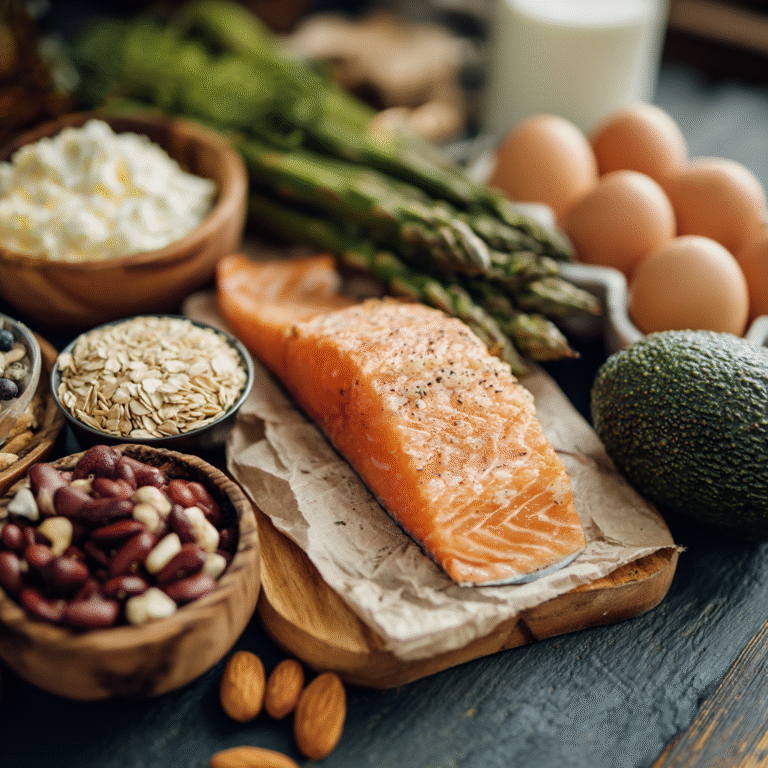When it comes to feeding a growing family’s healthy diet, ensuring everyone gets the right nutrients can feel like a balancing act. Among the many essential components of a healthy diet, protein plays a key role in supporting growth, development, and overall well-being. Whether it’s toddlers taking their first steps, active school-age kids, or busy parents juggling it all, protein provides the building blocks needed for strong muscles, healthy immune function, and sustained energy. In this article, we’ll explore why protein is so important for families at every stage and offer practical tips for incorporating it into everyday meals.
Table of Contents
- Understanding the Importance of Protein for Every Family Member
- Choosing the Right Protein Sources for Growing Children and Adults
- Balancing Protein Intake with Other Nutrients in Family Meals
- Practical Tips for Incorporating Protein into Everyday Family Recipes
- In Retrospect
Understanding the Importance of Protein for Every Family Member
Protein is an essential macronutrient that supports the growth, repair, and maintenance of tissues throughout the body. For a family with members spanning different age groups—from toddlers to seniors—adequate protein intake plays a crucial role in ensuring everyone stays energized and healthy. It supplies the building blocks needed for muscle development in children and teenagers, aids in wound healing for adults, and helps prevent muscle loss often associated with aging in older family members.
Ensuring a well-balanced protein intake can be simplified by incorporating diverse sources into everyday meals. This variety not only guarantees a more complete amino acid profile but also keeps mealtimes exciting for all ages. Here are some key protein sources families might consider including regularly:
- Lean meats like chicken, turkey, and beef
- Seafood such as fish and shrimp
- Dairy products including yogurt, cheese, and milk
- Plant-based options like beans, lentils, tofu, and quinoa
- Nuts and seeds for healthy fats and additional protein boosts
Choosing the Right Protein Sources for Growing Children and Adults
When selecting protein sources for both children and adults, it’s important to focus on variety and quality. Animal-based proteins like lean meats, poultry, fish, eggs, and dairy provide all essential amino acids necessary for growth, muscle repair, and overall health. For growing children, sources such as chicken, eggs, and yogurt not only support development but also supply vital nutrients like iron and calcium. Adults can benefit from incorporating fish rich in omega-3 fatty acids to support cardiovascular health alongside their protein intake.
Equally vital are plant-based proteins, especially in families seeking diverse or vegetarian options. Foods such as beans, lentils, chickpeas, quinoa, and tofu offer excellent protein boosts and come packed with fiber and antioxidants. Combining different plant proteins throughout the day ensures a complete amino acid profile is maintained. Encouraging a balance between animal and plant sources helps foster healthy eating habits in children and adults alike, promoting sustained energy levels, muscle maintenance, and overall well-being.
- Lean meats and poultry: High in complete proteins and essential nutrients
- Fish and seafood: Provides omega-3s and supports brain development
- Eggs and dairy: Rich in amino acids, calcium, and vitamins
- Legumes and pulses: Excellent plant-based proteins with fiber benefits
- Whole grains and nuts: Contribute to protein diversity and healthy fats
Balancing Protein Intake with Other Nutrients in Family Meals
Ensuring a well-rounded meal means more than just focusing on protein; it requires thoughtful integration of carbohydrates, fats, vitamins, and minerals. Proteins play a vital role in growth and repair, but excessive consumption can overshadow other essential nutrients. Including a variety of colorful vegetables, whole grains, and healthy fats alongside protein sources offers a spectrum of nutrients that support energy balance and overall health for every family member. For example, pairing lean meats or legumes with quinoa or brown rice and a side of steamed broccoli ensures that meals aren’t just protein-heavy but nutrient-rich and fiber-filled.
To maintain harmony on the plate, consider the following practical tips:
- Mix protein sources: alternate between animal proteins like chicken and fish, and plant-based options like beans or tofu.
- Balance portion sizes: aim for protein to cover about a quarter of the plate, with the rest divided between vegetables and whole grains.
- Enhance meals with healthy fats: include nuts, seeds, or avocado to support nutrient absorption and provide satiety.
- Be mindful of processed foods: limit high-sodium or sugar-laden protein products to keep meals wholesome.
This approach ensures that each meal fuels every family member effectively, nurturing development without compromising the rich variety of nutrients our bodies crave.
Practical Tips for Incorporating Protein into Everyday Family Recipes
Boosting protein intake doesn’t have to be complicated or time-consuming. Start by integrating lean meats such as chicken, turkey, or fish into your family’s favorite meals. For example, adding shredded chicken to a vegetable stir-fry or swapping ground beef for turkey in pasta sauce maintains familiar flavors while increasing protein content. Don’t overlook plant-based options like lentils, chickpeas, and black beans, which blend seamlessly into soups, stews, or even homemade burgers. These choices not only diversify the protein sources but also introduce fiber and essential nutrients that support overall health.
Another simple approach is incorporating protein-rich dairy and seeds into everyday snacks and sides. Sprinkle chia seeds or hemp hearts over yogurt or oatmeal for a subtle yet powerful protein boost. Cheese cubes or cottage cheese paired with fresh fruits make quick, kid-friendly snacks loaded with protein. When baking, consider substituting some flour with almond or soy flour to enhance protein content without sacrificing texture. These small adjustments make it easier to meet daily protein needs without overhauling your family’s diet.
In Retrospect
Incorporating adequate protein into a growing family’s diet is essential for supporting healthy development and overall well-being. Whether it’s through lean meats, dairy, legumes, or plant-based sources, protein provides the building blocks needed for energy, growth, and repair. By understanding the important role protein plays and balancing it with other nutrients, families can create meals that nourish every member and keep everyone thriving. Remember, a well-rounded diet that includes a variety of protein-rich foods is key to fostering lifelong healthy habits for your loved ones.
Related Products
-
Sacheu Lip Liner Stay-N Peel Off Lip Stain — Long …
Beauty $12.00 -
Dokotoo Women’s Casual Loose Overalls Jumpsuits On…
Clothing $31.88 -
Sale!
AUTOMAN-Garden-Hose-Nozzle, ABS Water Spray Nozzle…
Home Original price was: $9.99.$8.99Current price is: $8.99.




